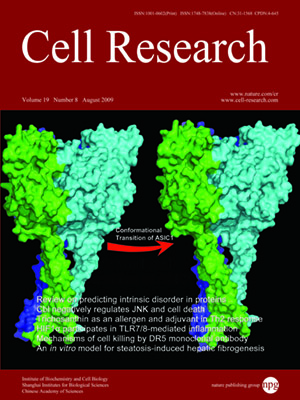
Volume 19, No 8, Aug 2009
ISSN: 1001-0602
EISSN: 1748-7838 2018
impact factor 17.848*
(Clarivate Analytics, 2019)
Volume 19 Issue 8, August 2009: 973-983
ORIGINAL ARTICLES
The involvement of hypoxia-inducible factor 1 alpha in Toll-like receptor 7/8-mediated inflammatory response
Sally A Nicholas and Vadim V Sumbayev
Medway School of Pharmacy, University of Kent, Kent ME4 4TB, UK
Correspondence: Vadim V Sumbayev,(V.Sumbayev@kent.ac.uk )
Toll-like receptors (TLRs) 7 and 8 are crucial in host defence against single-stranded RNA (ssRNA) viruses. Such viruses cause severe illnesses, which remain a serious medical burden in both industrialised and developing countries. TLR7/8 downstream signaling leads to a dramatic cellular stress associated with energy consumption. However, the molecular mechanisms of cell survival and adaptation to TLR7/8-induced stress, which give the cells an opportunity to initiate proper inflammatory reactions, are not clear at all. Here we report for the first time that ligand-induced activation of TLR7/8 leads to the accumulation of hypoxia-inducible factor 1 alpha (HIF-1α) protein in THP-1 human myeloid macrophages via redox- and reactive nitrogen species-dependent mechanisms. MAP kinases and phosphoinositol-3K are not involved in TLR7/8-mediated HIF-1α accumulation. Experiments with HIF-1α knockdown THP-1 cells have clearly demonstrated that HIF-1α is important for the protection of these cells against TLR7/8-induced depletion of ATP. Thus, HIF-1α might support both cell survival and the production of pro-inflammatory cytokines upon TLR7/8 activation.
Cell Research (2009) 19:973-983. doi: 10.1038/cr.2009.44; published online 21 April 2009
FULL TEXT | PDF
Browse 1888


